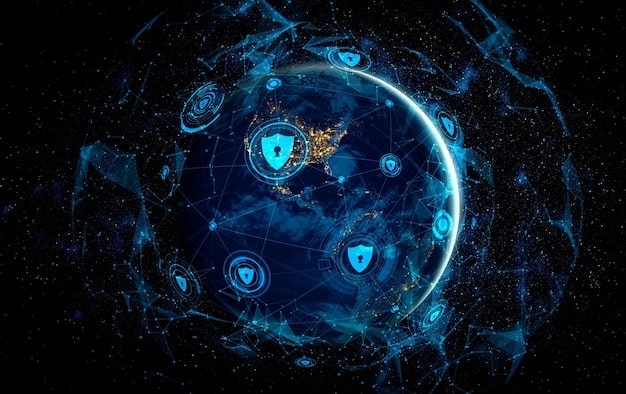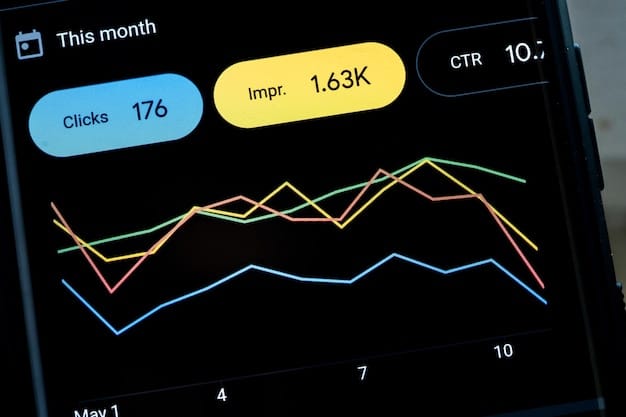Endpoint Detection and Response (EDR): A Comprehensive Guide

Endpoint Detection and Response (EDR) is a cybersecurity technology that continuously monitors endpoints for suspicious activity and provides automated responses to threats, enhancing an organization’s overall security posture.
In today’s digital landscape, cyber threats are constantly evolving, making it crucial for organizations to implement robust security measures. Endpoint Detection and Response (EDR) solutions play a vital role in protecting endpoints, such as desktops, laptops, and servers, from sophisticated attacks. These tools provide real-time monitoring, threat detection, and automated response capabilities, enabling businesses to proactively defend against cybersecurity threats.
Understanding Endpoint Detection and Response (EDR)
Endpoint Detection and Response (EDR) has emerged as a critical component of modern cybersecurity strategies. It goes beyond traditional antivirus software by providing continuous monitoring and advanced analytics to detect and respond to threats that may bypass initial defenses. Understanding the core principles of EDR is essential for strengthening your cybersecurity posture.
What is EDR?
EDR systems continuously monitor endpoints for suspicious activities, collect and analyze data, and automate responses to identified threats. Key capabilities include real-time visibility, threat detection, incident response, and forensic analysis.
How Does EDR Work?
EDR solutions typically involve deploying agents on endpoints to collect data, transmitting this data to a central server for analysis, and using machine learning algorithms to detect anomalies. When a threat is identified, the EDR system can automatically respond by isolating the infected endpoint, removing malicious files, and notifying security personnel.
- Enhanced Visibility: EDR provides real-time insights into endpoint activity, enabling security teams to quickly identify and respond to threats.
- Proactive Threat Detection: By using advanced analytics and machine learning, EDR can detect sophisticated threats that might evade traditional security measures.
- Automated Response: EDR systems can automate responses to identified threats, minimizing the impact of security incidents and reducing the workload on security teams.
In summary, EDR is a comprehensive solution that enhances cybersecurity by providing continuous monitoring, advanced threat detection, and automated incident response capabilities.

Key Features of EDR Solutions
Effective EDR solutions are characterized by a range of features that enable comprehensive endpoint protection. These features include advanced threat detection, incident response capabilities, forensic analysis tools, and integration with other security systems. Understanding these key features is essential for choosing the right EDR solution for your organization.
Advanced Threat Detection
EDR solutions use various techniques, such as behavioral analysis, machine learning, and threat intelligence feeds, to detect known and unknown threats (zero-day exploits). This proactive approach helps identify and mitigate risks before they can cause significant damage.
Incident Response Capabilities
When a threat is detected, EDR platforms provide tools for rapid incident response, including isolating infected endpoints, containing the spread of malware, and remediating compromised systems. Automated response actions can significantly reduce the time and effort required to resolve security incidents.
Forensic Analysis Tools
EDR systems collect detailed logs and data on endpoint activity, which facilitates in-depth forensic analysis after a security incident. This analysis helps security teams understand the attack vector, identify the root cause of the breach, and improve future security measures.
- Real-Time Monitoring: Continuous monitoring of endpoint activity to detect suspicious behavior as it occurs.
- Behavioral Analysis: Identifying anomalies and deviations from normal endpoint behavior to detect potential threats.
- Threat Intelligence Integration: Leveraging threat intelligence feeds to identify known malicious actors and emerging threats.
In conclusion, the key features of EDR solutions, including advanced threat detection, incident response capabilities, and forensic analysis tools, are essential for providing comprehensive endpoint protection and enhancing an organization’s overall cybersecurity posture.
Benefits of Implementing EDR
Implementing an EDR solution can bring numerous benefits to an organization’s security posture. These benefits include enhanced threat visibility, improved incident response times, reduced risk of data breaches, and better compliance with regulatory requirements. Understanding these advantages is critical for justifying the investment in EDR technology.
Enhanced Threat Visibility
EDR solutions provide real-time visibility into endpoint activity, allowing security teams to quickly identify and respond to threats. This visibility helps organizations proactively manage their security risks and minimize the impact of security incidents.
Improved Incident Response Times
By automating incident response actions, EDR platforms can significantly reduce the time it takes to resolve security incidents. Faster response times can help prevent the spread of malware, minimize data loss, and reduce the overall cost of a breach.
Reduced Risk of Data Breaches
EDR helps to prevent data breaches by detecting and responding to threats before they can compromise sensitive information. By proactively addressing security risks, organizations can protect their data, maintain customer trust, and avoid costly regulatory penalties.
- Proactive Threat Hunting: EDR enables security teams to proactively search for hidden threats within the network.
- Reduced Dwell Time: By quickly detecting and responding to threats, EDR reduces the amount of time attackers have to operate within the network.
- Improved Compliance: EDR can help organizations meet regulatory requirements related to data protection and security.
Ultimately, implementing EDR provides numerous benefits, including enhanced threat visibility, improved incident response times, and a reduced risk of costly data breaches.

Choosing the Right EDR Solution
Selecting the right EDR solution for your organization requires careful consideration of various factors, including your specific security needs, budget, and technical capabilities. Evaluating different EDR vendors, comparing their features and pricing, and conducting a proof-of-concept can help you make an informed decision.
Assess Your Security Needs
Before evaluating EDR solutions, it is essential to assess your organization’s specific security requirements. Consider the types of threats you face, the sensitivity of your data, and the regulatory requirements you must comply with.
Evaluate EDR Vendors
Research and compare different EDR vendors based on their product features, pricing, customer reviews, and industry reputation. Look for vendors that offer a range of deployment options, such as cloud-based, on-premises, or hybrid solutions.
Conduct a Proof-of-Concept
Before making a final decision, conduct a proof-of-concept with your top EDR vendors. This will allow you to test the solution in your own environment, evaluate its effectiveness, and ensure that it meets your specific security needs.
- Integration Capabilities: Ensure the EDR solution integrates seamlessly with your existing security tools.
- Scalability: Choose an EDR solution that can scale to meet your growing security needs.
- Ease of Use: Opt for an EDR solution that is easy to deploy, manage, and use.
In conclusion, selecting the right EDR solution involves assessing your security needs, evaluating different vendors, and conducting a proof-of-concept to ensure the solution meets your requirements.
Integrating EDR with Other Security Tools
EDR can be even more effective when integrated with other security tools, such as Security Information and Event Management (SIEM) systems, threat intelligence platforms, and network security solutions. Integrating EDR with these tools provides a more comprehensive and coordinated approach to cybersecurity.
SIEM Integration
Integrating EDR with SIEM systems allows security teams to correlate endpoint data with other security events, providing a more holistic view of the threat landscape. This integration can improve threat detection and incident response capabilities.
Threat Intelligence Integration
Integrating EDR with threat intelligence platforms provides access to up-to-date information on emerging threats and malicious actors. This integration can help organizations proactively defend against new and sophisticated attacks.
Network Security Integration
Integrating EDR with network security solutions, such as firewalls and intrusion detection systems, provides a layered approach to security. This integration can help organizations detect and respond to threats that may bypass endpoint defenses.
- Centralized Management: Integrating EDR with other security tools provides a centralized management console for monitoring and responding to security events.
- Automated Workflows: Integration can automate security workflows, reducing the workload on security teams and improving response times.
- Improved Threat Detection: By correlating data from multiple sources, integration can improve threat detection accuracy.
In summary, integrating EDR with other security tools can provide a more comprehensive and coordinated approach to cybersecurity, improving threat detection, incident response, and overall security posture.
Future Trends in EDR
The field of EDR is continuously evolving, with new technologies and approaches emerging to address the ever-changing threat landscape. Looking ahead, we can expect to see increased adoption of artificial intelligence (AI), cloud-based EDR solutions, and extended detection and response (XDR) platforms. Staying informed about these trends can help organizations prepare for the future of endpoint security.
Artificial Intelligence (AI) in EDR
AI is playing an increasingly important role in EDR, with machine learning algorithms used for threat detection, behavioral analysis, and automated response. AI can help security teams identify and respond to threats more quickly and accurately.
Cloud-Based EDR Solutions
Cloud-based EDR solutions offer several advantages, including scalability, cost-effectiveness, and ease of deployment. These solutions are becoming increasingly popular, particularly among small and medium-sized businesses.
Extended Detection and Response (XDR)
XDR platforms take EDR to the next level by integrating security data from multiple sources, including endpoints, networks, and cloud environments. This provides a more comprehensive view of the threat landscape and enables more effective threat detection and response.
- Automation: Increased automation of security tasks to reduce the workload on security teams.
- Threat Intelligence Sharing: Enhanced sharing of threat intelligence data between organizations.
- Focus on Prevention: Greater emphasis on proactive threat prevention measures.
In conclusion, the future of EDR will be shaped by AI, cloud-based solutions, and XDR platforms, all aimed at providing more comprehensive and effective endpoint security.
| Key Point | Brief Description |
|---|---|
| 🛡️ Core Principles | Continuous monitoring and automated threat response for enhanced cybersecurity. |
| 🔍 Key Features | Advanced threat detection, incident response, and forensic analysis tools. |
| 📈 Benefits | Improved incident response, reduced data breach risk, and enhanced threat visibility. |
| 🤖 Future Trends | AI-driven threat detection, cloud-based solutions, and extended threat detection (XDR). |
Frequently Asked Questions (FAQ)
▼
EDR provides continuous monitoring and advanced analytics, while traditional antivirus primarily relies on signature-based detection of known malware. EDR offers more proactive and dynamic threat protection.
▼
EDR provides tools for rapid incident response, including isolating infected endpoints, containing malware spread, and remediating compromised systems. It automates responses to reduce the impact of incidents.
▼
While EDR significantly enhances security, no solution can guarantee complete protection. EDR is most effective when used as part of a layered security approach that includes firewalls, intrusion detection systems, and employee training.
▼
The deployment time varies depending on the size and complexity of the organization. Cloud-based solutions typically deploy faster than on-premises solutions, but a thorough assessment and planning are essential.
▼
Managing an EDR solution requires skills in cybersecurity, incident response, and threat analysis. Organizations can either train internal staff or outsource EDR management to a managed security service provider (MSSP).
Conclusion
In conclusion, Endpoint Detection and Response (EDR) solutions are essential for enhancing your cybersecurity posture in today’s threat landscape. By providing real-time monitoring, advanced threat detection, and automated response capabilities, EDR tools help organizations proactively defend against sophisticated attacks and minimize the impact of security incidents. Choosing the right EDR solution and integrating it with other security tools can significantly improve your ability to protect your endpoints and sensitive data.





